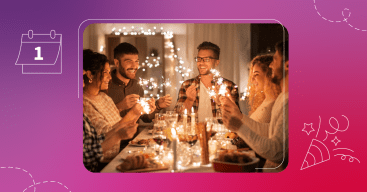Let’s face it, it’s a complicated and fragmented world out there when it comes to marketing your business online — and it’s not getting any easier.
Today, we’re going to try to simplify at least one part of that landscape and explain some of the key things you can do — yourself, or with help — to make sure your business gets found when consumers are looking for you or need your products or services. We’re going to call these things “Local SEO.”
But first, let’s be clear that “Local SEO” is just a name. Lots of people use it, and they often mean different things by it (especially if they’re trying to sell you something!). What we’re going to focus on here is what’s underneath that label. What are the things you really need to get done online to be successful, whatever they might be called, and however they might be pitched by Company X?
Traditional SEO vs Local SEO
The term SEO stands for Search Engine Optimization. Back in the early days of the Web, that meant “making sure you show up on Google when someone does a search, separate from any paid ads.” But the days when the “path to purchase” went almost entirely through Google are over. Consumers today have many more options and take much more windy roads to making a decision.
When people talk about Local SEO now, they generally mean all the things you need to do to stay “visible” online along your customers’ journey to your business. And considering SEO’s long association with websites, it makes sense to start there.
Your website
Regardless of how a consumer finds you, it’s likely they’ll visit your website at some point to get to know you better. Your website is a reflection of you — what you do, what you sell, and how you position yourself in your market and your community, and maybe even what you stand for. It’s your opportunity to tell your story, and to motivate consumers to do business with you.
So it’s critical that all of the key details about your business be present on your site — things like the products and services you offer, your hours of operation, your geographical service area, etc. But it’s also important to highlight what we at Hibu call “The Motivating Factors” (sometimes these are called your “Unique Selling Propositions” or USPs). These are the things that make you a better choice than your competitors, like:
- How responsive you are
- Your low prices or service guarantees
- Your 24×7 availability
Perhaps you’re a veteran-owned or women-owned business. Or maybe what sets you apart is how you give back to your local community.
Whatever you think will convince your target customer to want do business with you needs to be presented clearly on your website.
But your website has another purpose too – one that’s not so obvious…
Making your website relevant to consumers and computers
The world we live in is increasingly driven by decisions made by computers. While your website is being looked at by consumers, it’s also being read over and over again by computers — aka online “bots” — run by Google, Microsoft / Bing, Facebook, Apple, Amazon and many other companies. These bots are reading the content of your site, storing and indexing it, and using it to decide where and how to show your site to your potential customers when they’re using these services.
That means it’s important what information you put on your site (which is what engages your site visitors), but also how that information is put there (which is what makes your site relevant to search engines). In technical terms, it matters how your information is “tagged” on your site using “schema.”
Schema is nothing more than code on your website’s pages (visible to computers, but not to consumers) that tells those bots how to read and interpret all the information on your pages. Increasingly, schema is critical to making sure your site — and your business — get found online.
And it goes without saying that today, your website has to be fast and it has to be mobile friendly for consumers and bots for two key reasons:
- Consumers will often leave a site that takes more than a couple of seconds to load, and they’ll almost certainly leave one that doesn’t work well on their phone.
- Google and other online services are increasingly recognizing this and penalizing sites that don’t meet their minimum standards for speed and mobile compatibility by pushing them down in search rankings, or not showing them at all.
The art of building and tagging your website for both your potential customers and for search engine bots is just one part of Local SEO. And in an increasingly diverse digital marketing ecosystem, it may not even be the most important part! Check back for part II to see how your online business listings, social profiles and more impact Local SEO — and your ability to get found by your local customers.
Want to learn more about SEO? Check out Hibu’s interactive SEO Solar System to see how On-Page, Off-Page and Local SEO work together to make you more visible online.
This post was originally published on Local Search Association’s Marketing Bitz blog at https://marketingbitz.com/part-1-local-seo-is-about-much-more-than-just-your-website/



